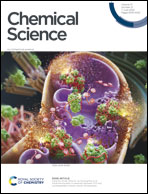A sustainable approach for the synthesis of recyclable cyclic CO2-based polycarbonates†
Abstract
It is highly desirable to reduce the environmental pollution related to the disposal of end-of-life plastics. Polycarbonates derived from the copolymerization of CO2 and epoxides have attracted much attention since they can enable CO2-fixation and furnish biorenewable and degradable polymeric materials. So far, only linear CO2-based polycarbonates have been reported and typically degraded to cyclic carbonates. Here we synthesize a homogeneous dinuclear methyl zinc catalyst ((BDI-ZnMe)2, 1) to rapidly copolymerize meso-CHO and CO2 into poly(cyclohexene carbonate) (PCHC) with an unprecedentedly cyclic structure. Moreover, in the presence of trace amounts of water, a heterogeneous multi-nuclear zinc catalyst ((BDI-(ZnMe2·xH2O))n, 2) is prepared and shows up to 99% selectivity towards the degradation of PCHC back to meso-CHO and CO2. This strategy not only achieves the first case of cyclic CO2-based polycarbonate but also realizes the complete chemical recycling of PCHC back to its monomers, representing closed-loop recycling of CO2-based polycarbonates.



 Please wait while we load your content...
Please wait while we load your content...